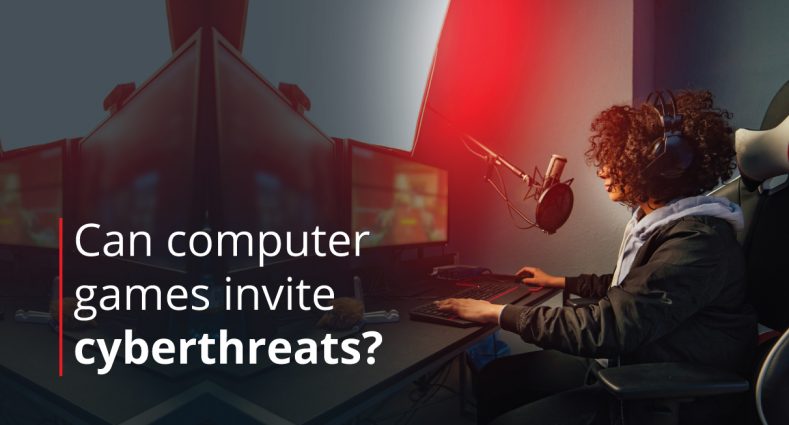Can playing video games on the PC cause cyberattacks?

The video gaming industry has become the foremost entertainment medium worldwide as evidenced by its valuation. The market is estimated to reach an estimated $179.1 billion by 2024, growing at a CAGR of 6.4% from 2019 to 2024.
And yet, perhaps because of its denotation as an ‘entertainment’ medium, the video game industry doesn’t always come to the forefront on discussions of cybersecurity. Other industries such as IT, manufacturing and healthcare dominate the proceedings while the most important topic of cybersecurity in the extremely influential video game industry gets very little airtime.
Video games are on the radar of attackers
Consider the two major attributes of the video game industry:
- It is one of the most convenient digital medium to access video gaming content
- A majority of video gamers are not adults
This combination makes it a perfect target for cyber attackers to exploit leaving video game users at great risk of cyberattacks.
According to a report in June 2019, the gaming industry suffered 12 billion credential stuffing attacks between November 2017 and March 2019 and was among the most lucrative targets for hackers to make quick profits. As a reminder, credential stuffing attacks take advantage of human negligence over passwords. Since most people reuse their passwords, hackers obtain credentials from different sources and use credential stuffing software to stuff websites using these stolen credentials. For more information, read the detailed article on the topic on the Seqrite Blog, Quick Heal’s enterprise arm.
Gamers must deal with ransomware
Since most gamers use several accounts to manage their games across the PC and other devices, they are likely to reuse the same password which makes them extremely vulnerable to credential stuffing attacks.
Apart from credential stuffing attacks, video games may also be susceptible to ransomware attacks. Gamers routinely save game files such as replays, maps, configurations, etc. on their system which can be targeted by attackers. In 2015, the Quick Heal blog ran an analysis on the TeslaCrypt ransomware which would convert saved gamed files into encrypted forms and then demand users to pay a ransom to gain access back to it.
Whether you’re a long-time gamer or a parent worried about the gaming habits of your children, it pays to be safe in this wild world by taking a few precautions:
1. Obtain your games from verified sources
Resist the urge to obtain your games through unauthorized means – you may be indulging in piracy as well as installing dangerous malware on your system
2. Use different credentials for gaming
Don’t use the same password which you use for your email account or bank account. This makes it harder for attackers to target you with credential stuffing attacks.
3. Trust no one in multiplayer gaming
Be very wary of links or offers of obtaining in-game money. Accounts can easily be compromised or faked.
4. Be on the lookout for phishing attacks
You may receive emails from famous gaming companies asking you to click on links and supposedly confirm your credentials. Always check the website and when in doubt, never provide the data.
Quick Heal’s Total Security solution comes in-built with Parental Control which enables parents to monitor their kids’ usage constructively through Internet Browsing Control, Application Control and PC Access Control.



No Comments, Be The First!